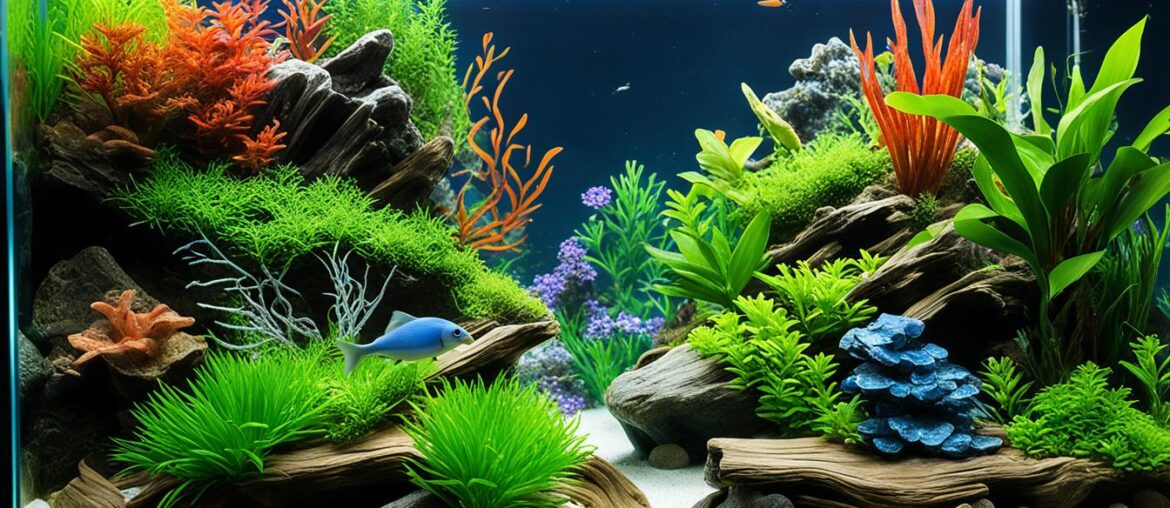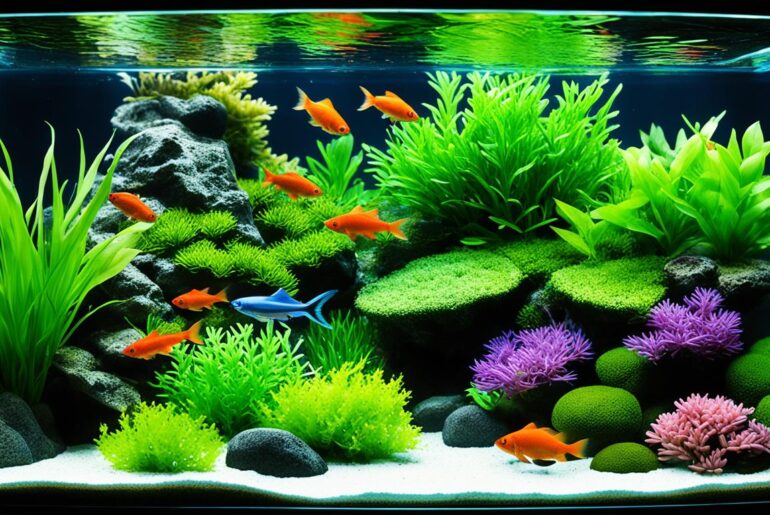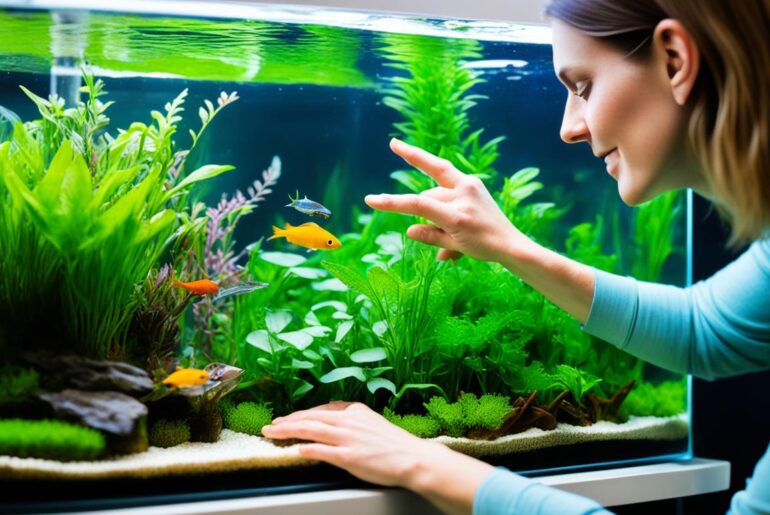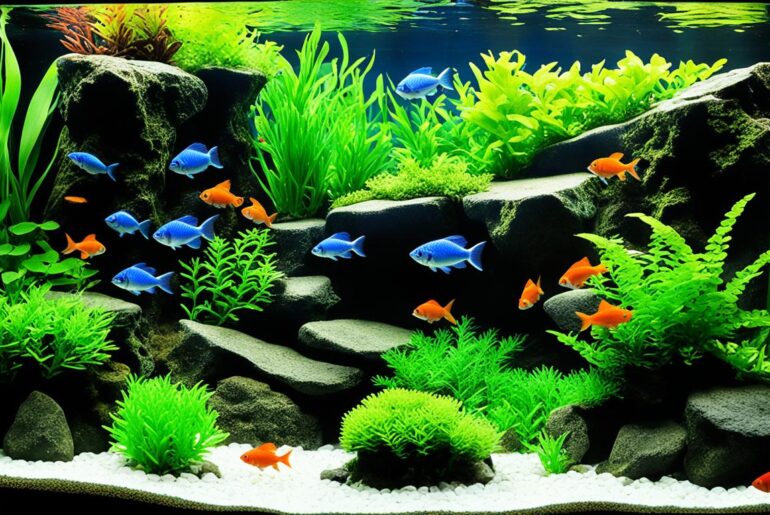Setting up a freshwater aquarium can be an incredibly fulfilling and enriching experience. There’s something magical about creating a miniature underwater world, where vibrant fish swim gracefully amidst a backdrop of colorful plants and captivating decorations. For me, it all started with a simple fascination for aquatic life and a desire to bring that beauty into my own home.
I remember the excitement I felt when I decided to dive into the world of freshwater aquariums. There was so much to learn and discover, and I wanted to ensure that I provided the best possible environment for my future fishy companions. However, I quickly realized that setting up an aquarium without guidance can be quite overwhelming.
That’s why I’m here to share with you a comprehensive 7-step checklist specifically designed for beginners like us. This checklist will guide you through each stage of the setup process, ensuring that you create a thriving aquatic haven for your new underwater friends. From finding the ideal location to adding the finishing touches, this checklist has got you covered.
Whether you’re a complete novice or have a bit of experience, this checklist will help you avoid common pitfalls and establish a successful freshwater aquarium. So, let’s roll up our sleeves, get our hands wet, and embark on this exciting journey together.
Key Takeaways:
- Setting up a freshwater aquarium can be a fulfilling and enriching experience.
- Having a step-by-step checklist is crucial for beginners to avoid common pitfalls.
- This 7-step checklist will guide you through each stage of the setup process.
- Creating a thriving aquatic world requires attention to detail and proper planning.
- By following this checklist, you can ensure the well-being of your fish and enjoy a successful aquarium journey.
Step 1: Find the Ideal Location for Your Aquarium
Setting up a freshwater aquarium begins with finding the perfect location for it. The right placement can have a significant impact on the health and well-being of your aquatic pets. Here are some essential considerations to keep in mind:
- Choose a hard, flat, and waterproof surface or an aquarium stand that can support the weight of the tank.
- Avoid placing the aquarium in direct sunlight, as it can lead to temperature fluctuations and excessive algae growth.
- Keep the tank away from air vents to prevent drafts that can alter water temperature and cause stress to your fish.
- Avoid high-traffic areas to minimize disturbances and provide a calm environment for your aquatic pets.
- Ensure easy access to an electrical outlet for powering equipment such as filters, heaters, and lights.
- Have a nearby water source for regular maintenance tasks such as water changes and top-offs.
By selecting an optimal location, you’ll provide a stable and comfortable environment for your freshwater aquarium, setting the stage for success.
Step 2: Choose the Right Size and Type of Aquarium
Once you have found the ideal location for your aquarium, the next step in your beginner’s aquarium setup checklist is to select the right size and type of aquarium for your needs. This decision will depend on various factors, such as available space, your preferences, and the number of fish you plan to keep.
A 10-gallon tank is a popular choice for beginners due to its affordability and compact size. It can accommodate a small community of fish and is relatively easy to maintain. However, larger aquariums generally offer better water quality and provide more space for your fish to thrive. Consider opting for a larger tank if you have enough space and resources.
When choosing the type of aquarium, you have two main options: glass or acrylic. Glass aquariums are cost-effective and provide excellent clarity for observing your fish. They are also more resistant to surface scratches. On the other hand, acrylic tanks are lighter and stronger, making them a popular choice for larger aquariums. Acrylic tanks offer more design options and are less likely to shatter if accidentally dropped.

Step 3: Install a Lid or Hood for Your Aquarium
Installing a lid or hood for your aquarium is crucial for the safety and well-being of your fish. It prevents them from jumping out of the tank and minimizes evaporation.
Glass lids are affordable and provide a clear view of the tank. They are a popular choice among freshwater aquarium enthusiasts. On the other hand, acrylic lids are more expensive but offer better insulation against temperature changes.
When choosing a lid, ensure that it has tight openings to prevent fish from escaping and to maintain a stable environment inside the tank.
Investing in a high-quality lid or hood for your aquarium is one of the essential freshwater aquarium supplies. It not only protects your fish but also helps maintain a consistent environment for their well-being.
Step 4: Set up the Heating System and Thermometer
When it comes to creating the perfect environment for your fish, maintaining the optimal temperature is crucial. To achieve this, you’ll need to install a heater in your aquarium. Choose an adjustable heater that matches the size of your tank, providing approximately 5 watts of heat per gallon of water. This will ensure that the temperature remains stable and comfortable for your fish.
But how do you know if the temperature is just right? That’s where a reliable thermometer comes in. By placing a thermometer in your tank, you can easily monitor the water temperature and make any necessary adjustments. It’s important to keep the water temperature within the recommended range for your specific fish species to prevent any health issues.
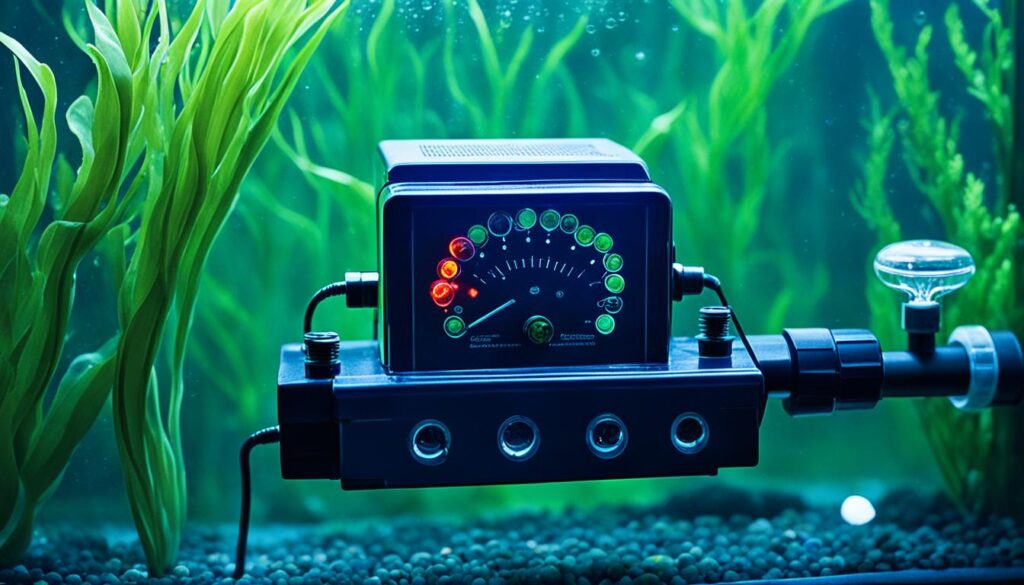
Step 5: Install a Filtration System
A filtration system is an essential component of any freshwater aquarium setup. It plays a vital role in maintaining water quality, ensuring the health and wellbeing of your fish. There are different types of filtration systems available, but as a beginner, I recommend considering either a hang-on-back (HOB) filter or a sponge filter.
Hang-on-Back (HOB) Filter
HOB filters are popular among beginners due to their ease of installation and maintenance. They are usually positioned on the back of the aquarium, with a motor that sucks water from the tank, passes it through various filter media, and then returns it back. This ensures efficient mechanical, chemical, and biological filtration.
Advantages of HOB Filters:
- Easy to install and set up
- Customizable with different filter media
- Simple to clean and maintain
Sponge Filter
Sponge filters are another excellent option for beginners. They consist of a sponge attached to a tube and an air pump. The air pump creates a flow of water through the sponge, providing mechanical and biological filtration. Sponge filters are cost-effective, reliable, and ideal for smaller aquariums.
Advantages of Sponge Filters:
- Cost-effective
- Reliable and low maintenance
- Gentle water flow, suitable for delicate fish and fry
When choosing a filtration system, consider the flow rate. It’s recommended to have a filter that can filter the water at least four times per hour. This ensures optimal filtration and keeps the water clean and clear for your fish.
To visualize the different types of filtration systems, refer to the table below:
| Filtration System | Advantages |
|---|---|
| Hang-on-Back (HOB) Filter | Easy to install and set up Customizable with different filter media Simple to clean and maintain |
| Sponge Filter | Cost-effective Reliable and low maintenance Gentle water flow, suitable for delicate fish and fry |
With a proper filtration system in place, you can ensure a clean and healthy environment for your fish, promoting their overall well-being and longevity.

Step 6: Add Substrate, Decorations, and Plants
Now that we have set up the basic essentials for your freshwater aquarium, it’s time to add some personality and create a visually appealing and comfortable environment for your fish. Adding the right substrate, decorations, and plants will not only enhance the aesthetic appeal of your tank but also provide hiding places and oxygen for your fish.
Choose the Perfect Substrate:
Start by selecting the right type of substrate for your tank. Gravel and sand are popular choices among freshwater aquarium enthusiasts. They come in different colors and sizes, allowing you to create a personalized look. Before adding it to the tank, make sure to rinse the substrate thoroughly to remove any dust or debris. This will help maintain water clarity and prevent cloudiness in your aquarium.
Set Up Decorations:
No aquarium is complete without decorations. Rocks, driftwood, and aquarium decorations create a stimulating environment for your fish, providing places to explore and hide. When choosing decorations, ensure they are fish-safe and won’t alter the water chemistry. Give them a good rinse to remove any dust particles before placing them in the tank. Be creative and arrange the decorations to create a natural and visually pleasing underwater landscape.
Add Life with Live Plants:
Live plants not only add beauty to your aquarium but also provide important benefits for your fish. They help oxygenate the water, absorb nitrates, and provide natural hiding places. When selecting plants, consider their compatibility with your tank’s lighting and the care requirements. Choose a variety of plants for different levels of the tank, such as foreground, midground, and background plants, to create depth and dimension in your underwater world.
Remember to research the specific care needs of each plant and provide adequate lighting and nutrients for their growth.
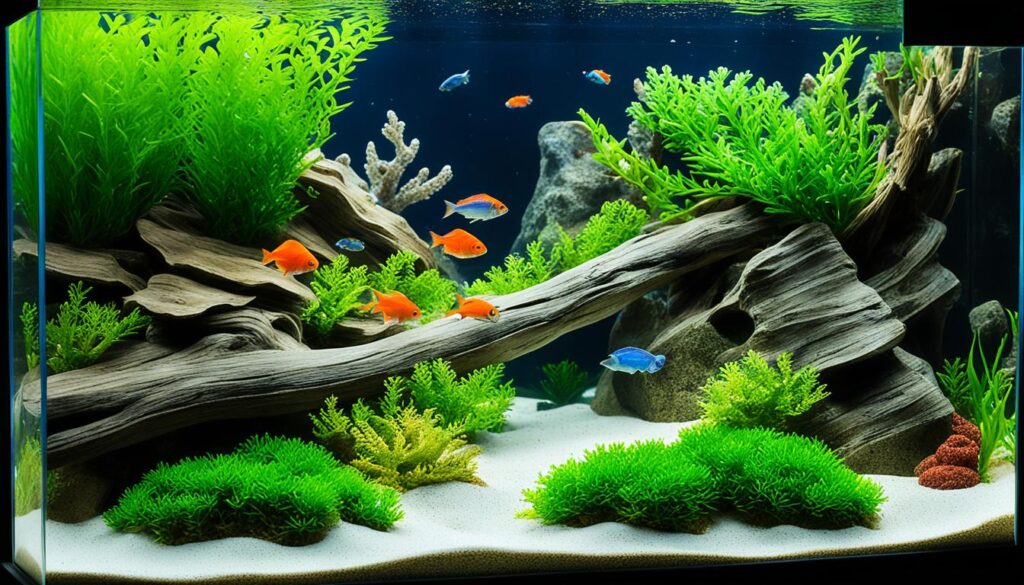
Creating a visually appealing and natural habitat in your aquarium not only benefits your fish but also enhances your viewing pleasure. Take the time to arrange the decorations and plants thoughtfully, ensuring they provide hiding places and swim-through areas for your fish. A well-decorated and planted aquarium can be a centerpiece of any room, bringing joy and tranquility to your space.
Now that we have added the substrate, decorations, and plants, the next step is to test the water and prepare it for the arrival of your fish. Follow me to Step 7: Test the Water and Add Fish.
Step 7: Test the Water and Add Fish
Before adding fish to your aquarium, it’s crucial to test the water parameters using appropriate test kits. This step ensures that the water conditions are ideal for the health and well-being of your fish.
Measure the levels of ammonia, nitrite, pH, and other relevant factors to ensure a balanced and healthy environment. High levels of ammonia and nitrite can be toxic to fish, while pH fluctuations can cause stress and harm.
Once you have tested and adjusted the water parameters, it’s time to gradually add fish to the tank. Introduce them slowly to allow for acclimatization and prevent stress. Adding too many fish at once can overload the biological filtration system and result in poor water quality.
Remember to research the specific needs and compatibility of each fish species before adding them to your aquarium. Some fish may require specific water conditions, tank mates, or feeding habits.
Tip: Consult with a knowledgeable aquarium specialist or a trusted fish store for guidance on choosing fish that are suitable for your setup.
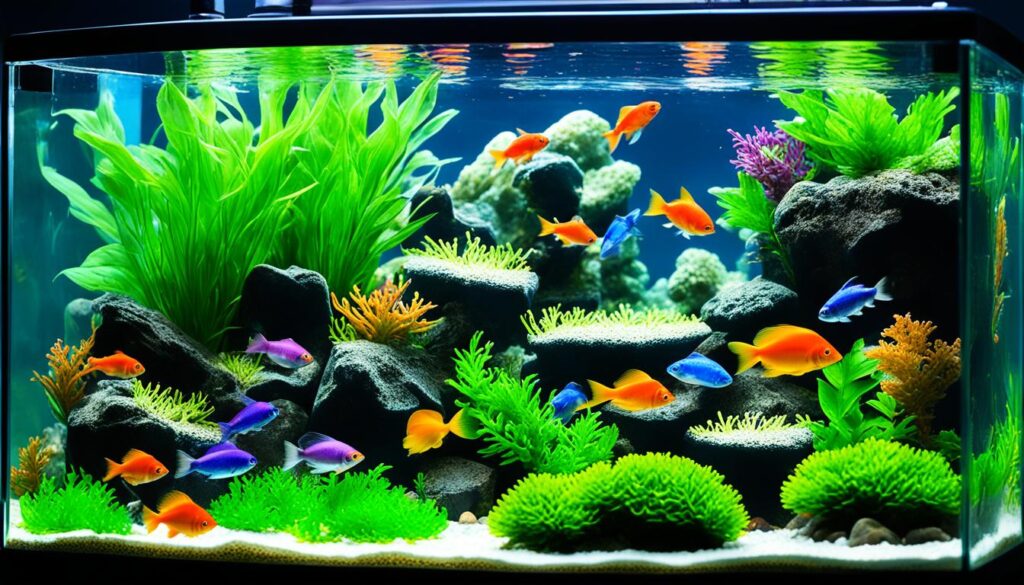
| Tested Parameters | Ideal Range |
|---|---|
| Ammonia | 0 ppm |
| Nitrite | 0 ppm |
| Nitrate | |
| pH | 6.0 – 7.8 |
| Temperature | Varies based on fish species |
Regularly monitoring water parameters and performing routine maintenance tasks will help ensure a healthy and thriving aquarium environment for your fish.
Conclusion
Setting up a freshwater aquarium is an exciting journey for beginners like you. By following this comprehensive 7-step checklist, you can ensure that your aquarium is properly set up, creating a thriving environment for your fish. Remember to monitor the water quality regularly, perform routine maintenance tasks, and provide proper care to ensure the well-being of your aquatic friends.
A well-planned setup and regular monitoring of water parameters play a vital role in maintaining a healthy aquarium ecosystem. Regular testing helps you identify and address any imbalances promptly, ensuring a safe and comfortable habitat for your fish. It’s also crucial to perform regular maintenance tasks such as water changes, cleaning the filter, and trimming plants to keep the aquarium clean and balanced.
As you embark on your aquarium journey, keep in mind that each fish species has unique requirements. Research the specific needs of the fish you plan to keep, including their ideal water temperature, pH level, and compatible tank mates. Providing them with a suitable environment will promote their health and enhance their vibrant colors and natural behaviors.
FAQ
What is the first step in setting up a freshwater aquarium?
The first step is to find the ideal location for your aquarium.
How do I choose the right size and type of aquarium?
Consider the available space and the number of fish you plan to keep. A 10-gallon tank is popular for beginners, but larger aquariums are better for water quality and more fish.
Do I need to install a lid or hood for my aquarium?
Yes, a lid or hood is crucial for the safety and well-being of your fish. It prevents jumping and minimizes evaporation.
How do I set up the heating system and thermometer in my aquarium?
Choose an adjustable heater that matches your tank size and place a thermometer in the tank to monitor the water temperature.
What type of filtration system should I install in my aquarium?
Consider a hang-on-back (HOB) filter or a sponge filter. HOB filters are easy to install and clean, while sponge filters are cost-effective and reliable.
How do I add substrate, decorations, and plants to my aquarium?
Choose a substrate like gravel or sand, decorate with rocks and driftwood, and add fish-safe aquarium decorations. Live plants enhance the aesthetic appeal and provide oxygen.
When should I test the water and add fish to my aquarium?
Test the water parameters using appropriate test kits, ensuring optimal levels of ammonia, nitrite, pH, and other factors. Once the water is balanced, gradually introduce fish to the tank to prevent stress.
